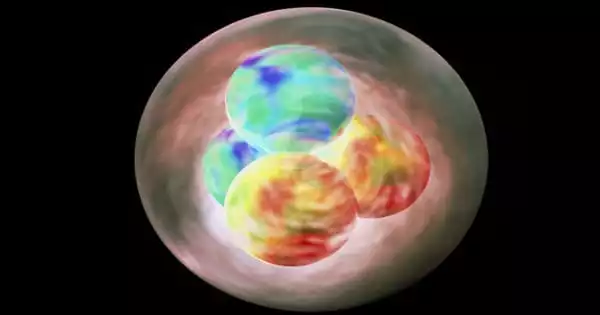According to new research, helium concentrations are rising in the atmosphere, confirming a long-held assumption about the byproduct of fossil fuel extraction. Scientists from UC San Diego’s Scripps Institution of Oceanography employed an unusual technique to detect rising helium levels in the atmosphere, resolving a long-standing debate among atmospheric chemists.
The amount of the 4-helium (4He) isotope in the atmosphere is increasing because 4He is emitted through the combustion and extraction of fossil fuels. According to the experts, it is increasing at a very slow but, for the first time, clearly detectable rate. The 4He isotope itself does not add to the greenhouse effect that is making the planet warmer, but measures of it could serve as indirect markers of fossil-fuel use.
The National Science Foundation-supported study appears today in the journal Nature Geoscience.
“The major aim was to address a longstanding disagreement in the scientific community about atmospheric helium concentrations,” said study lead author Benni Birner, a former graduate student and now postdoctoral researcher at Scripps Institution of Oceanography at UC San Diego.
We don’t know for sure, but I’m wondering if there’s more 3He coming out of the Earth than we previously thought, which may possibly be harvested and used to power our nuclear fusion reactors in the future. The study sheds new light on the debate over the uncommon helium isotope 3He.
Benni Birner
The isotope 4He is created by radioactive decay in the Earth’s crust and accumulates in the same reservoirs as fossil fuels, particularly natural gas reservoirs. 4He is accidentally emitted during the extraction and combustion of fossil fuels, providing another tool to assess the extent of industrial activity.
The technology used by the Scripps Oceanography team to detect the amount of helium in the atmosphere is the study’s breakthrough. Jeff Severinghaus, Bill Paplawsky, and Ralph Keeling of Birner and Scripps established a precise method for comparing the 4He isotope to quantities of the common atmospheric gas nitrogen. Because the level of nitrogen in the atmosphere is constant, an increase in He/N2 indicates the rate of 4He buildup in the environment.
The work is a “masterpiece of fundamental geochemistry,” according to study co-author and Scripps Oceanography geochemist Ralph Keeling, who oversaw the landmark carbon dioxide measurement known as the Keeling Curve. Though helium is reasonably easy for scientists to detect in air samples, existing at levels of five parts per million of air, no one has done the job to analyze it thoroughly enough to discover an atmospheric rise, he said.

The study also lays the groundwork for scientists to better comprehend the valuable 3-helium (3He) isotope, which has applications in nuclear fusion, cryogenics, and other fields. Proposals to obtain the rare gas from the moon show the lengths to which manufacturers will go to gather it.
Previous study has shown that the 4He isotope occurs in the atmosphere in an unchanging ratio with 3He. The atmospheric growth of the 4He isotope recorded at Scripps suggests that the 3He isotope must be rising at the same pace as the 4He isotope. Birner’s team’s research raises various issues regarding the correctness of scientists’ previous beliefs about how and in what quantities 3He is created.
The examination of 46 years of air samples with high precision has confirmed that atmospheric helium levels are rising. This study introduces a new metric for measuring worldwide natural gas use while also raising intriguing questions regarding a previously unknown source of the rare and precious 3He isotope.
Langenfelds noted that using helium for worldwide estimates of fossil fuel emissions could be tricky because concentrations vary throughout natural gas reservoirs. However, scientists are also investigating whether helium may be used to identify leaks at gas extraction sites or for other small-scale monitoring reasons.
“We don’t know for sure, but I’m wondering if there’s more 3He coming out of the Earth than we previously thought, which may possibly be harvested and used to power our nuclear fusion reactors in the future,” Birner said. “The study sheds new light on the debate over the uncommon helium isotope 3He,” stated Keeling. “The implications are unclear, but more research is needed.”
















